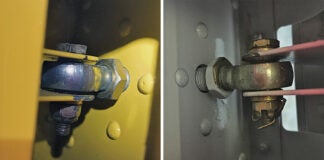
Question: Your comments in the February 2016 issue referring to the original builder and completion of an 8130-12 are of special interest to me. I too thought that when I manufactured more than 51% of an aircraft that was damaged in an off-field landing, I could become the builder, receive the repairman’s certificate, and would be able to complete and sign off on annual condition inspections.
How do I go about getting listed as builder on an 8130-12? After building up and installing a replacement engine, constructing two new wings, installing new main landing gear struts and brakes, plus the removal and replacement of the lower half of the tail, I’m certain that sufficient experience has been acquired to qualify.
Answer: I think you might have misunderstood the answer in the February issue. The subject aircraft in that column was an incomplete project that had not been certificated.
The primary builder is set when the aircraft is registered. If it has not yet been certificated, additional builders may be added on the 8130-12 when the aircraft is certificated. However, one (and only one) of these listed builders may be eligible for the repairman certificate for that aircraft.
If I understand your situation, your aircraft has already been certificated and flown. No additional builders may be listed after certification. Unfortunately, the work you performed on the aircraft is considered as repair, not building.
Only one builder may be considered eligible for the repairman certificate for an Amateur-Built aircraft, and that builder must be listed on the 8130-12 that was submitted at certification.
My research shows that your aircraft was originally certificated in 1998 and I suspect that the original builder was issued the repairman certificate for that aircraft.
Sorry for the misunderstanding. I hope this helps clear it up.
Question: My Experimental Light Sport Aircraft is a replica of an early Piper J-3 Cub. Can I use the “X” within the N-number instead of applying the 2-inch Experimental placard to the aircraft?
Answer: It’s interesting that you have come up with this question at this time. Just a couple of weeks ago, I was called on to do an ELSA inspection of a Cub replica. The owner had indeed used the “X” in the N-number.
Part 45.22(b) is the reg that allows 2-inch N-numbers and using the “X” to replace the Experimental placard on an aircraft with the same external configuration as an aircraft built at least 30 years ago.
Unfortunately 45.22(b) states that this only pertains to aircraft certificated under 21.191(d) or (g), which is Experimental Exhibition or Experimental/Amateur-Built respectively. Experimental Light Sport Aircraft fall under 21.191(i). So no, it doesn’t work for ELSA. Sorry.
Question: If I remove an engine from my aircraft to install a different one and sell the one I removed, does the engine logbook go to the new owner of the engine or stay with the aircraft? I’ve checked FAR part 91.417 and 91.419, but it doesn’t address selling just the engine.
Answer: If you sell the engine, the logbook should go with the engine.
Please send your questions for DAR Asberry to editorial@kitplanes.com with “Ask the DAR” in the subject line.

![]()
Mel Asberry is an experienced Designated Airworthiness Representative specializing in Experimental/Amateur-Built aircraft. He and his wife, Ann, have built seven amateur-built airplanes including two ultralight types, a Moni Motorglider, a Dragonfly Mk2, two RV-6s and a Zenair CH 601HDS. They are currently building a scratch-built biplane.











